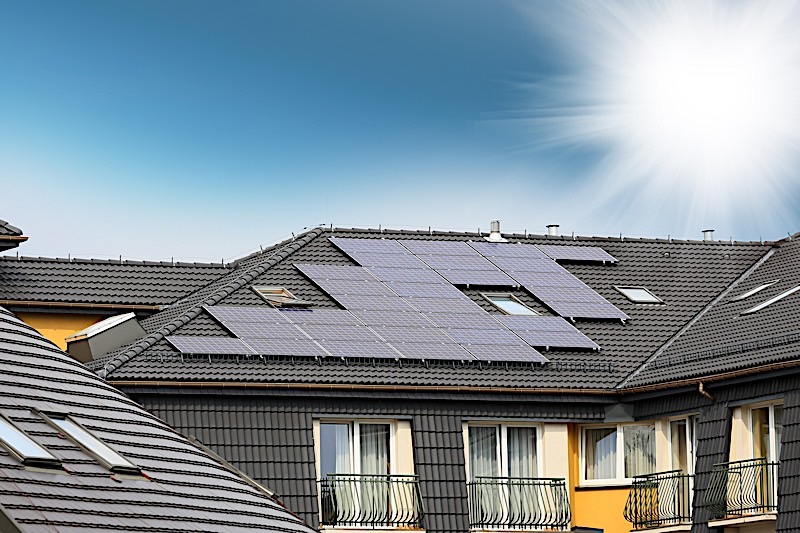Have you ever found yourself asking how green building affects the environment?
Unless you have been living under a rock since the turn of the century, there’s a great chance you have been made aware of the push for environmentalism. More and more people are actively making a conscious effort to protect our natural resources, and similar efforts have made their way to the real estate industry. In a relatively short period of time, green home improvement projects have found their way to the top of homeowners’ wish lists, and for good reason. Not only can the right green additions benefit homeowners, but they can also make significant contributions to the betterment of our own environment.
The benefits of green concepts extend far beyond cost saving strategies; they do more than their fare share of helping the environment. There is no doubt about it, eco-friendly home additions have really made an impact on the way we view the world around us, and the least homeowners can do to raise awareness is to grasp how green building affects the environment. In gaining a better understanding of the beneficial impact green home improvements have on the environment, more people are likely to implement sustainable homeownership practices. With any luck, a little environmental literacy will go a long way in making green home improvements the norm rather than the exception.
How Green Building Affects The Environment In Today’s Market

Do you have an idea of the impact eco-conscious decisions can make, but are otherwise oblivious to the intricate details? Perhaps you are considering implementing some green home improvements of your own and simply want confirmation that your actions are warranted. Whatever the case may be, rest assured that green building does benefit the environment in a significant way. Let’s take an in-depth look at just how green building affects the environment.
First and foremost, green home improvements are typically far more reaching and beneficial than most give them credit for. Outside of the benefits that have become synonymous with homeownership, green upgrades excel in bettering the world around us; something that can’t be underestimated in today’s market.
According to the LEED certification program introduced by the U.S. Green Building Council (USGBC), qualified green homes “promote energy savings, water efficiency, reduction in carbon emissions, reduction in waste sent to landfills, improved indoor air quality, protection of natural resources, and the choice of environmentally and socially responsible sites for the construction of new buildings.”
The most widely excepted and pronounced benefit green homes have on the environment is, without a doubt, energy-efficiency. In fact, those homes that are LEED-certified use somewhere in the neighborhood of 30 to 60 percent less energy than those that have neglected green additions completely. In using significantly less electricity and natural gas, it’s entirely possible for respective green homes to dramatically reduce their carbon footprint, if not eliminate it altogether. More specifically, homes that reduce their carbon footprint effectively reduce their carbon dioxide emissions. And therein lies one of the most beneficial aspects of green home improvements; less carbon dioxide is released into the atmosphere. Simply by using green energy (geothermal, wind and solar), homes can cut back or eliminate the amount of carbon dioxide emissions polluting our ozone layer.
In addition to energy consumption, or lack thereof, understanding how green building affects the environment reveals that eco-friendly decisions aren’t based solely on eliminating poor practices, but also efficiency. That said, green homes place an emphasis on sustainability. That means certified homes not only use recycled materials, but they also receive them from sustainable supplies. All things considered, green homes make wiser decisions when it comes to using building materials. The decision to use sustainable and recyclable materials is huge, in and of itself.
It’s worth noting, however, that green building materials don’t sacrifice quality to meet certification criteria. In fact, green building materials can range from new bamboo wood floors to high-quality reclaimed timber. Most importantly, green building materials are good for the environment because they are as renewable as they are sustainable. That means no energy is needed to create them, because they already exist; once again reducing the carbon footprint.
Finally, you can’t fully grasp how green building affects the environment until you apply the same concept to the landscaping of a home. Believe it or not, green home improvements can extend far beyond the electrical components of a home. Landscaping, for example, awards savvy homeowners the ability to help the environment will simultaneously cutting back their water consumption. It’s common, if not universally carried out across all green homes, for eco-friendly landscaping to consist mainly of plants that are native to region. For what it’s worth, indigenous plant won’t require any special attention and can be expected to thrive without additional irrigation or excessive amounts of water. And I am sure I don’t need to tell you that conserving one of earth’s most precious resources is a good thing.
Understanding how green building affects the environment will go a long way in educating homeowners on the benefits of green home improvements. That said, a little environmental literacy can go a long way in convincing more people to adopt similar practices in their own homes. If we can get enough people to understand how beneficial the right upgrades can be, there is a good chance green homes will be the norm sooner rather than later. Are you doing your part?
